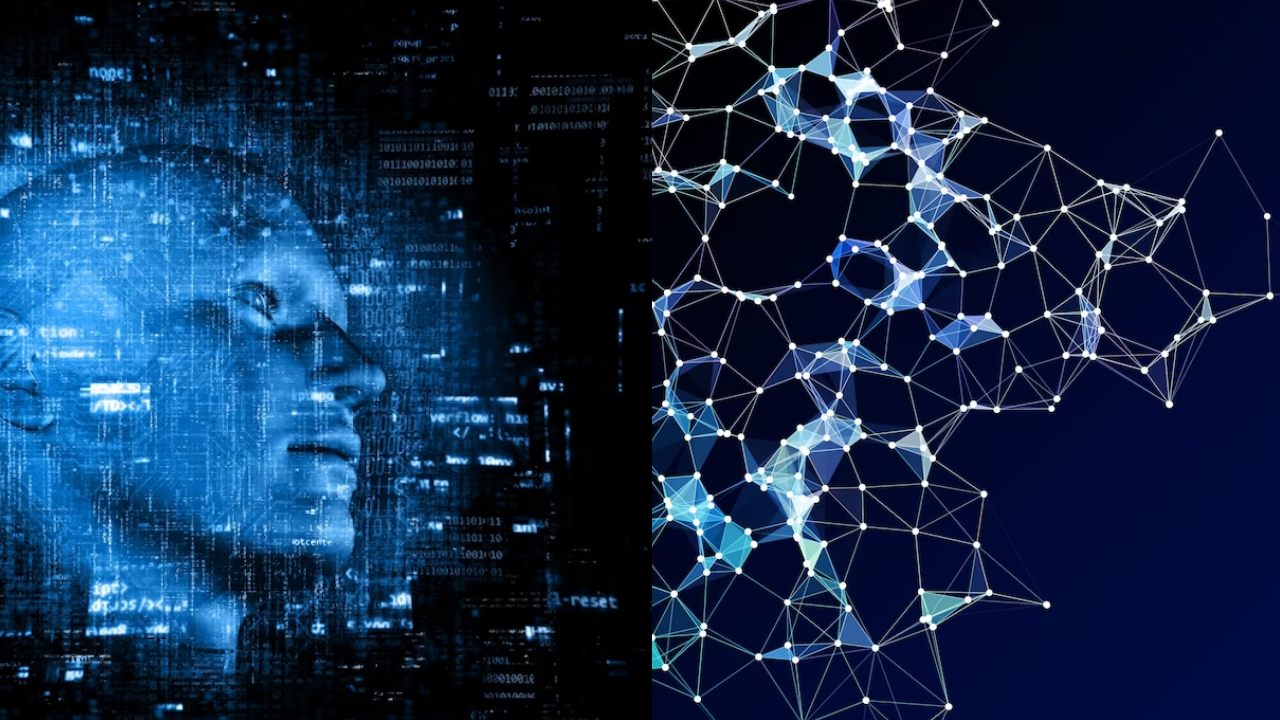Introduction
In the field of artificial intelligence (AI), two terms that often come up in discussions are machine learning and deep learning. While they are both branches of AI and share some similarities, they have distinct characteristics and applications. In this article, we will delve into the differences between machine learning and deep learning, exploring their concepts, approaches, and real-world applications.

Machine Learning
Machine learning is a subset of AI that focuses on enabling computer systems to learn from data and improve their performance without explicit programming. It involves algorithms that allow computers to automatically analyze data, identify patterns, and make predictions or decisions.
a. Supervised Learning: Supervised learning is a type of machine learning where the algorithm is trained on labeled data. It learns from input-output pairs and uses them to make predictions or classify new, unseen data. Examples include image recognition, spam filtering, and sentiment analysis.
b. Unsupervised Learning: Unsupervised learning involves training algorithms on unlabeled data, allowing them to find patterns or structure within the data. Clustering, anomaly detection, and dimensionality reduction are common applications of unsupervised learning.
c. Reinforcement Learning: Reinforcement learning involves training an agent to interact with an environment and learn from feedback in the form of rewards or penalties. It is commonly used in robotics, gaming, and optimization problems.
Deep Learning
Deep learning is a subset of machine learning inspired by the structure and function of the human brain. It focuses on creating artificial neural networks with multiple layers (deep neural networks) to learn and make complex decisions.
a. Neural Networks: Deep learning relies on neural networks, which are interconnected layers of artificial neurons. Each layer processes information and passes it to the next, allowing the network to learn hierarchical representations of data.
b. Feature Extraction: Deep learning excels at automatically extracting relevant features from raw data, eliminating the need for manual feature engineering. This ability makes it ideal for tasks such as image and speech recognition, natural language processing, and recommendation systems.
c. Training with Big Data: Deep learning models require large amounts of labeled data to achieve high accuracy. The availability of big data and advancements in computing power have played a crucial role in the success of deep learning.
Machine Learning vs. Deep Learning
a. Complexity and Interpretability: Machine learning algorithms tend to be simpler and more interpretable, as they rely on explicit feature engineering and have fewer parameters. In contrast, deep learning models are more complex and often referred to as “black boxes” due to their intricate architecture and numerous parameters.
b. Data Requirements: Machine learning algorithms can work well with smaller datasets, whereas deep learning models typically require larger datasets to generalize effectively. Deep learning shines when provided with abundant labeled data.
c. Computation Power: Deep learning models are computationally intensive and often demand powerful hardware, such as GPUs or specialized hardware like TPUs (Tensor Processing Units). Machine learning algorithms are generally less resource-intensive.
d. Transfer Learning: Transfer learning, the ability to leverage knowledge from pre-trained models, is more prevalent in deep learning. It allows for the transfer of learned features from one task to another, reducing the need for extensive training on new datasets.
Real-World Applications
a. Machine Learning Applications: Machine learning is widely used in various domains, including healthcare (diagnosis, drug discovery), finance (credit scoring, fraud detection), marketing (customer segmentation, recommendation systems), and autonomous vehicles.
b. Deep Learning Applications: Deep learning has revolutionized fields such as computer vision (object detection, image recognition), natural language processing (language translation, sentiment analysis), speech recognition, autonomous driving, and medical image analysis.
Conclusion
Machine learning and deep learning are two crucial branches of artificial intelligence with distinct characteristics and applications. While machine learning is known for its simplicity, interpretability, and flexibility with smaller datasets, deep learning excels at handling complex, unstructured data and has achieved remarkable success in various domains. Both approaches have their strengths and limitations, and their selection depends on the specific problem and available resources. Understanding the differences between machine learning and deep learning enables us to choose the most appropriate technique to tackle real-world challenges and drive advancements in the field of AI.
